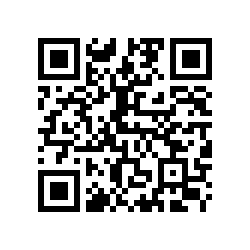Penerapan Algoritma K-Means Dalam Pengklasteran Hasil Evaluasi Akademik Mahasiswa
(1) Universitas Putra Indonesia “YPTK” Padang, Indonesia
(2) Universitas Putra Indonesia “YPTK” Padang, Indonesia
(3) Universitas Putra Indonesia “YPTK” Padang, Indonesia
(*) Corresponding Author
Abstract
Full Text:
PDFReferences
M. R. A. Fernanda, P. Sokibi, And R. Fahrudin, “Sistem Prediksi Ketepatan Kelulusan Mahasiswa Berdasarkan Data Akademik Dan Non Akademik Menggunakan Metode K-Means (Studi Kasus : Universitas Catur Insan Cendekia),” J. Digit, Vol. 11, No. 1, P. 89, 2021.
K. Ariasa, I. G. A. Gunadi, And I. M. Candiasa, “Optimasi Algoritma Klaster Dinamis Pada K-Means Dalam Pengelompokkan Kinerja Akademik Mahasiswa (Studi Kasus: Universitas Pendidikan Ganesha),” J. Nas. Pendidik. Tek. Inform. Janapati, Vol. 9, No. 2, Pp. 181–193, 2020.
Y. S. Adoe And J. Sembodo, “Peranan Keluarga Menurut Amsal 22:6 Dalam Pembentukan Karakter Anak,” Miktab J. Teol. Dan Pelayanan Kristiani, Vol. 1, No. 1, P. 52, 2021.
M. Harahap, A. W. D. R. Zamili, M. A. Arvansyah, E. F. Saragih, S. Rajen, And A. M. Husein, “K-Means Clustering Algorithm Approach In Clustering Data On Cocoa Production Results In The Sumatra Region,” J. Resti (Rekayasa Sist. Dan Teknol. Informasi), Vol. 6, No. 6, Pp. 905–910, 2022.
A. Wibowo, Moh Makruf, Inge Virdyna, And Farah Chikita Venna, “Penentuan Klaster Koridor Transjakarta Dengan Metode Majority Voting Pada Algoritma Data Mining,” J. Resti (Rekayasa Sist. Dan Teknol. Informasi), Vol. 5, No. 3, Pp. 565–575, 2021.
D. Ariyanto, “Data Mining Menggunakan Algoritma K-Means Untuk Klasifikasi Penyakit Infeksi Saluran Pernafasan Akut,” J. Sistim Inf. Dan Teknol., Vol. 4, Pp. 13–18, 2022.
I. Jurnal, I. Bidang, T. Informasi, M. Al Ghifari, W. Trisari, And H. Putri, “Pengelompokan Mata Kuliah Berdasarkan Nilai Siswa Menggunakan K-Means Algoritma Dengan Metode Elbow Untuk Penentuan Centroid Machine Translated By Google,” Vol. 8, No. 1, Pp. 42–46, 2023.
R. Liu, “Artikel Penelitian Analisis Data Evaluasi Pendidikan Menggunakan Metode K- Means Clustering,” Vol. 2022, 2022.
“4. Klasterisasi Tingkat Penjualan Pada Startup Panak.Id Dengan Algoritma K-Means (S4).Pdf.” .
P. S. Informatika, U. Bhayangkara, J. Raya, And K. H. Dewantara, “Implementasi Algoritma K-Means Sebagai Clustering Metode Pemilihan Siswa Berprestasi Berdasarkan Kelas Akademik Machine Translated By Google,” Pp. 199–204.
N. Tahiri And B. Fichet, “Membangun Pohon Konsensus Alternatif Dan Pohon Super Menggunakan K-Means Dan Jarak Robinson Dan Foulds,” Vol. 38, No. 13, Pp. 3367–3376, 2022.
B. J. Frasson And J. C. Rocha, “Studi Kasus Dalam Bahan Konstruksi Gangue Batubara Kaolinitik,” Vol. 18, Pp. 1–16, 2023.
DOI: https://doi.org/10.30645/kesatria.v5i2.360
DOI (PDF): https://doi.org/10.30645/kesatria.v5i2.360.g357
Refbacks
- There are currently no refbacks.
Published Papers Indexed/Abstracted By:














